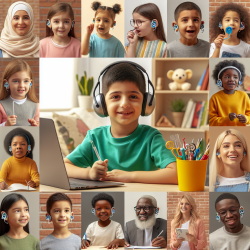The field of speech therapy continually evolves, embracing new research findings to improve therapy outcomes for individuals with diverse needs. One such area of focus is the intelligibility of consonants in alaryngeal talkers—individuals who have lost their natural voice due to laryngectomy and use esophageal or tracheoesophageal speech for communication. A recent pilot study titled "Consonant Intelligibility of Alaryngeal Talkers: Pilot Data" sheds light on this subject, offering valuable insights for speech therapists working with alaryngeal talkers.
Alaryngeal speech, including esophageal (E) and tracheoesophageal (TE) speech, presents unique challenges in speech intelligibility due to the absence of a natural larynx. The study compares the intelligibility of consonants produced by E and TE talkers, revealing that TE talkers generally exhibit higher consonant intelligibility. This finding is crucial for speech therapists aiming to enhance communication abilities in alaryngeal talkers.
The research emphasizes the importance of understanding the aerodynamic differences between esophageal and tracheoesophageal speech. TE speech, driven by pulmonary air, offers a distinct advantage in producing consonants more effectively, attributed to its greater aerodynamic support. For speech therapists, this highlights the potential for focusing on aerodynamic aspects of speech production during therapy.
Key takeaways for practitioners include:
- Enhanced focus on voicing features, as the study identifies voicing as a significant source of perceptual confusion in both E and TE talkers.
- Consideration of aerodynamic support in therapy strategies, especially for TE talkers, to leverage the pulmonary air source for improved consonant production.
- Adaptation of therapy approaches to emphasize the strengths of TE speech in producing voiced consonants, potentially leading to higher speech intelligibility.
This study not only underscores the need for tailored therapy approaches based on the type of alaryngeal speech but also encourages further research into the aerodynamic factors influencing speech intelligibility. By integrating these insights into practice, speech therapists can significantly improve the communicative outcomes for alaryngeal talkers.
For practitioners eager to delve deeper into this topic and refine their therapy techniques, further exploration of the original research offers a wealth of knowledge. Consonant Intelligibility of Alaryngeal Talkers: Pilot Data presents an opportunity to enhance understanding and skills, ultimately contributing to better speech therapy practices.










